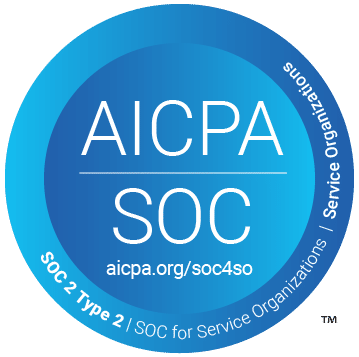Introduction
For most health care organizations, their primary purpose is to provide high quality patient care to support the best outcomes possible. The qualifications and expertise of an organization’s medical staff are arguably the greatest contributing factors to fulfilling this purpose.
And yet, there is example after example of health care organizations hiring or retaining providers whose license is restricted or even suspended by a state medical board. If great patient care is the whole point, then how can organizations fail to catch what seems like the most basic element – that a provider is fully licensed to render medical services? How hard can it be for an employer to verify the professional licensure of its employees and then have a license monitoring process to assure that licensure status changes are identified quickly? For organizations that try to do this in-house, the process can actually be complicated and labor intensive.
Licensure verification within a health care organization occurs largely in two departments – Human Resources and Credentialing. Human Resources needs to know that they are hiring a candidate who is appropriately licensed to provide the services for which they are being hired. Credentialing verifies licensure status and identifies adverse actions taken against a provider, relying on a variety of sources such as the National Provider Data Bank, state medical boards and the various state and federal exclusion/preclusion lists. Initial provider credentialing occurs at the time of hire; ongoing recredentialing is required every two to three years.
Why Managing Licensure Verification is Critical
The consequences to an organization for failing to manage their provider licensure verification effectively can be far-reaching. In addition to resulting in bad hires and credentialling headaches, a provider with license issues can impact an organization’s accreditation, billing and compliance with state/federal contracting requirements related to federal exclusion. It should also be noted that a health care organization which contracts with CMS or a state Medicaid agency must perform oversight to assure that contracted providers are also in the clear from a licensing and exclusion perspective.
In the event of an adverse event for a patient, licensure can become a factor as well. If a patient is harmed by a physician, nurse, therapist or other healthcare practitioner employed by an organization, the injured party can claim medical negligence or malpractice by the provider. However, there may also be a claim against the practitioner’s employer based on the legal concept of vicarious liability as well as direct claim against the organization if its hiring practices resulted in a provider being employed/retained who was unlicensed or sanctioned.
How to Mitigate the Risks Related to License Verification
Even organizations with robust hiring practices can make hiring mistakes. The goal should be to mitigate risk and take prompt action when a practitioner’s license becomes a problem. The best way to reduce licensure-related issues is to adopt hiring and verification practices that uncover problems before an offer letter is sent. Comprehensive background checks are absolutely essential. Some organizations can be hesitant to delay a physician’s start date until licensure verification is completed, but tying start dates to completion of these processes is the only way to avoid problems down the road.
There are several steps that can go a long way toward having a solid license verification process:
- Primary Source Verification. Below are some things to remember:
- To know the current status of a medical license, seek licensing board verification from the agency or body that issued it.
- Do not forget that a medical practitioner may be issued licenses for specific purposes. For example, a physician will also be issued a license to dispense medications, so checking with the DEA for licensure status may yield important information. For licensed pharmacy staff, pharmacy board verification as well as DEA licensure is necessary.
- Do not rely on the actual license presented by the practitioner as proof – documents can be forged and disciplinary action may have been taken since issuance.
- Criminal Background Checks. If criminal behavior by a provider is not reported to a medical or pharmacy licensing board by law enforcement or is omitted from its records, this information will surface in a comprehensive criminal record check. Do not rely on medical boards to provide the full picture. Not all states mandate that a provider voluntarily disclose criminal convictions and sanctions that are imposed by another state.
- Check for licensures in other states. The list of current licensures disclosed on a job application is a good start. Many providers are licensed in multiple states and therefore state licensing verification in each jurisdiction is essential to uncover any omissions that may affect a hiring decision.
- There may be instances where there are multiple types of licenses issued. For example, a licensed practice nurse or a nursing assistant may have been licensed as a registered nurse in another state and lost that license. The best practice is to query all medical licensing boards to uncover issues or discrepancies but few organizations are equipped to do this without assistance.
- Institute Ongoing Licensure Monitoring. If an organization decides only to monitor license status at the time of hire and when recredentialing every two to three years, this creates a much greater risk of retaining staff whose licensure has been suspended, revoked or restricted. This can have very negatively consequences that can be mitigated by ongoing monitoring of licenses.
Enlisting Assistance from credentials verification Organization Experts
If an organization is deciding whether or not to seek assistance with licensure verification, there are a number of factors to consider:
- The vast majority of licenses are issued at the state level and state medical board practices can vary significantly in terms of information detail and the types of board actions taken.
- Medical board data is not static – boards are regularly changing the data collected and the data security measures employed. Websites and data formats are also changed; this can result in skewed license monitoring outcomes that can greatly increase the need for manual staff intervention to wade through inconclusive findings and thereby delay licensure verification and credentialing efforts.
- For automated licensure verification tools to be effective, monitoring tools will need to be programmed and revised on a board-specific basis. This can drive a level of ongoing IT engagement and resources that many organizations wish to deploy elsewhere.
- Continuous monitoring is essential to stay on top of licensure changes and upcoming license expirations for an organization’s health care practitioners. This ongoing process is time intensive and can be significant drain on an organization’s administrative staff.
For the reasons stated above, organizations benefit from the help of experts, such as Streamline Verify, to provide ongoing licensure verification from licensing boards nationwide as a Credentials Verification Organization or CVO. Streamline Verify provide its clients with alerts about upcoming and current licensure expiration and information about disciplinary and other board actions. It also provides a client portal for access to cutting edge analytics and reports. From an IT resource perspective, Streamline Verify performs the board-specific programming needed to assure that monitoring results are accurate and actionable, with the added benefit of its exclusion monitoring platform to cross-check findings through a multitude of federal and state resources. This comprehensive solution relieves a healthcare organization from the burdensome task of keeping up with board changes and the rigor of ongoing monitoring across the many boards and licensing agencies nationwide.




































